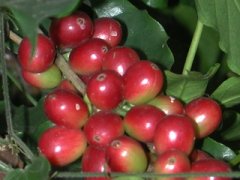Composition Analysis of Coffee Bean
Fat:
There are many kinds of fat in coffee, the most important of which are acidic fat and volatile fat; acidic fat means that fat contains acid, and its acidity varies with different types of coffee. Volatile fat is the main source of coffee aroma, emitting 40 aromatic substances, is a very complex and subtle ingredient.
Sugar:
Coffee beans contain about 8% sugar, most of which are converted to caramel after baking, giving caffeine a unique brown color.
Essence:
Can be divided into several kinds, accounting for nearly 1/3 of baked beans.
Caffeine
Caffeine is the most eye-catching of all ingredients. It has a wide range of functions, which will affect the brain, heart, blood vessels, gastrointestinal tract, muscle, kidney and other parts of the human body. An appropriate amount of caffeine will stimulate the cerebral cortex, promote sensation, judgment, memory and emotional activity, make the myocardial function more active, dilate blood vessels, enhance blood circulation, and improve metabolic function. Caffeine can also reduce muscle fatigue and promote digestive juice secretion. In addition, it also promotes kidney function and helps the body to expel excess sodium ions from the body, so with the improvement of diuresis, caffeine does not accumulate in the body like other anesthetic and excitatory substances, which will be excreted in about two hours.
Tannic acid:
The refined tannin will turn into a yellowish powder, which can easily dissolve into water. Once boiled, it will decompose into pyrosylic acid, making the coffee taste worse.
Minerals:
There are lime, iron, sulfur, phosphorus, sodium carbonate, chlorine and so on, but because the proportion is not high, so the flavor of coffee is not big, it will only bring a little astringency.
Crude fiber:
The fiber of raw beans will be carbonized after baking. The caramelization of carbon and sugar combine to form the hue of coffee, but the fiber turned into powder will have a considerable impact on the flavor of coffee.
Important Notice :
前街咖啡 FrontStreet Coffee has moved to new addredd:
FrontStreet Coffee Address: 315,Donghua East Road,GuangZhou
Tel:020 38364473
- Prev

Coffee Encyclopedia: an introduction to the world's giant coffee beans
Although all kinds of raw coffee from all over the world have their own taste, they are almost the same size, whether they are Robbins or Arabica beans. However, giant coffee beans (Elephant bean) are an exception, which is three times or more larger than other coffee beans. The taxonomic name of this giant coffee bean is Maragogype, which comes from
- Next

Coffee berries (3 pictures)
Related
- Guji coffee producing area of Guji, Ethiopia: Humbela, Shakiso, Wulaga
- What is the most expensive variety of Qiloso in BOP multi-variety group?
- How to store the coffee beans bought home?
- Why are Yemeni coffee beans so rare now?
- Ethiopian Sidamo all Red Fruit Sun Sun Santa Vini Coffee beans
- SOE is mostly sour? What does it mean? Is it a single bean? what's the difference between it and Italian blending?
- Is Italian coffee beans suitable for making hand-brewed coffee?
- How to choose coffee beans when making cold coffee? What kind of coffee beans are suitable for making cold coffee?
- Just entered the pit to make coffee, what kind of coffee beans should be chosen?
- Can only Japan buy real Blue Mountain Coffee? What are authentic Jamaican Blue Mountain coffee beans?

